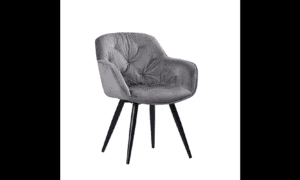People who spend some time outdoors know that owning a quality flashlight is essential. If you plan to go camping or to a place with limited visibility, such as a cave or forest, you will need a flashlight to see your way.
A flashlight such as a keychain flashlight helps you move around at night. It keeps wild animals away and lets other people know where you are if you get lost. Regardless of what you intend to use it for, choosing a suitable flashlight is an important task.
You want one that meets your individual needs and characteristics in brightness and durability. There are factors to consider when you buy a flashlight.
Flashlight Buying Tips
When buying a flashlight, you should have the following factors in mind:
1. Uses of the Flashlight
The first thing you should do is think about what you will use it for. This is important because different types of flashlights are suitable for different situations.
For instance, if you want a flashlight that can stand up to heavy storms or serve you underwater, then consider an industrial-grade flashlight that is spherical. On the other hand, if you need a flashlight to work reliably during emergencies, choose one with a tactical design.
Understanding why you need a flashlight will help you choose a suitable one for your needs.
2. Size of the Flashlight
You should also consider the size of the flashlight before you buy it. You can find the size of a particular model on its dimensions.
In general, flashlights are small enough to hold in your hand or fit into a pocket or bag without getting noticed. However, some flashlights are so large that they require a strap or handle for you to hold them easily.
The size of the flashlight will influence its ease of use and whether you can operate it with just one hand.
3. Battery Type and Spare Batteries
Another vital feature to consider is the type of battery that the flashlight uses. Some flashlights run on rechargeable batteries, while others run on disposable Alkaline or Lithium Primary cells.
The type of battery your flashlight takes will determine how long it stays operational before running out of power. It also influences how quickly you can replace spent batteries with fresh ones. Furthermore, check the availability of replacements before you buy a flashlight.
4. Light Output
You should also look at how much light the flashlight emits. The two most common ways of measuring the brightness of a flashlight are by lumens and candlepower.
Lumens indicate how bright the object looks when you stand in front of it, while candlepower indicates how far away you can see an object with the light.
A high lumen output flashlight will have a bright, helpful beam for illuminating objects at long distances. However, they are not suitable for close-up work.
Flashlights with low lumen outputs are not ideal for faraway tasks but do an excellent job of lighting up the area around you.
Lower lumen flashlights are also known as “area lights” because they work well when you need to see a large area, such as a room.
5. Material and Durability
Flashlights are from different materials, such as aluminum alloy or plastic. Plastic flashlights are inexpensive, but they lack durability and break easily.
On the other hand, aluminum alloy models have longer lives due to their inherent strength and durability. In addition, flashlights made of aluminum alloy are lighter than plastic ones.
A durable flashlight needs tight joints to prevent water from entering it. For this reason, the flashlight should have rubber seals on its switches, bezel rings, and cover caps.
6. Size of the Reflector
The reflector is an integral part of a flashlight that directly impacts how its beam looks. The larger the reflector, the wider and softer the flashlight beam.
Flashlights with large reflectors produce brighter beams with more spread-out light than smaller ones. In addition, Flashlights have either smooth or textured reflectors.
Smooth reflectors are suitable for general use, while textured ones are useful for producing long-distance beams that are bright and wide.
7. Switches
Flashlights also have switches that determine how easy it is to turn them on and off. There are three types of flashlight switches: twist, clicky, or paddle.
Twist switches rotate quickly through an entire rotation for fast switching action, while paddle switches offer the same effect with longer movements. The advantage of clicky switch flashlights is that they support momentary operation.
Do You Need One Today?
Every self-reliant person needs a flashlight as part of their survival kit. However, choosing the right one can be quite challenging with many different types and models on the market. The best way to make your selection is to determine what you will use it for, then select a flashlight with features that support those activities. In addition, look for an all-around flashlight that you can use in a wide range of circumstances.


















































